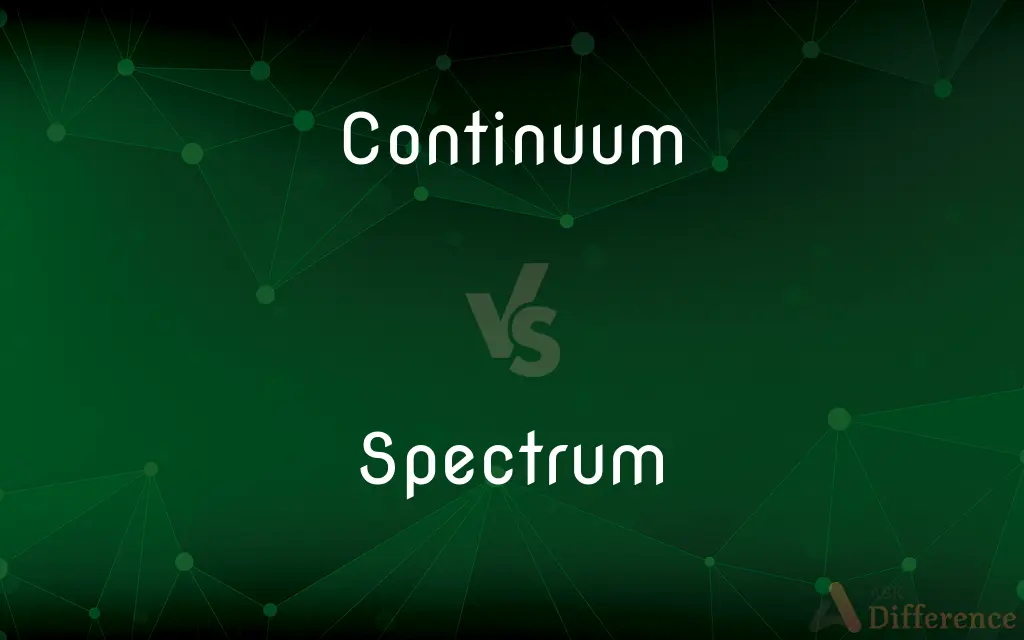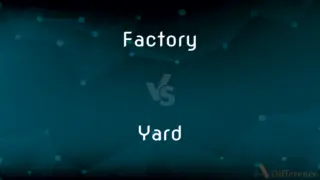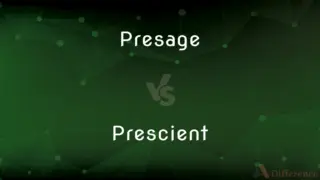Continuum vs. Spectrum — What's the Difference?
By Tayyaba Rehman — Updated on November 1, 2023
A Continuum is a seamless progression of elements, while a Spectrum refers to a range, often of colors or wavelengths.

Difference Between Continuum and Spectrum
Table of Contents
ADVERTISEMENT
Key Differences
Continuum and Spectrum are both terms referring to ranges, but they represent different kinds of sequences. A Continuum pertains to a whole that is made up of unbroken and continuous elements, without any clear demarcations between them. On the other hand, Spectrum generally refers to a band of colors, as seen in a rainbow, or to a range of other things spread across a defined interval, often with distinct variations.
When thinking of Continuum, imagine a gradual transition where one element flows seamlessly into the next without distinct separations. This concept is often used in contexts like space-time in physics or human development stages. Spectrum, meanwhile, is commonly associated with light and its array of colors, resulting from the dispersion of white light, but it can also represent a broad range of values or categories within a certain context.
The idea behind Continuum is the absence of gaps or sudden jumps. It emphasizes smoothness and continuity. For instance, in discussions about behavior or values, one might say there's a continuum from good to bad, suggesting many subtle gradations in between. Spectrum, in contrast, highlights the diversity and variety within a range. When talking about political beliefs, one might describe a spectrum of views from liberal to conservative, implying a diversity of distinct positions.
In daily language, Continuum often suggests a smooth transition without noticeable boundaries, like the continuum of aging where one stage of life flows seamlessly into the next. Spectrum, on the other hand, although it suggests a range, often encompasses distinct entities or categories within that range, such as the spectrum of emotions from happiness to sadness.
Comparison Chart
Definition
Seamless progression of elements
Range, often of colors or wavelengths
ADVERTISEMENT
Nature
Unbroken, without clear separations
Band or array with variations
Common Use
Concepts with gradual transitions
Categories or entities within a range
Example Context
Human development, space-time
Light colors, political views
Emphasis
Smoothness and continuity
Diversity within a range
Compare with Definitions
Continuum
A whole that can be divided into parts, yet remains undivided in nature.
The continuum of time keeps moving forward.
Spectrum
A band of colors produced by the separation of light components.
A prism divides light into a spectrum of colors.
Continuum
A continuous sequence in which elements are seamlessly connected.
Human development is a continuum from birth to death.
Spectrum
A range of wavelengths of electromagnetic radiation.
The electromagnetic spectrum includes everything from radio waves to gamma rays.
Continuum
An unbroken range without clear demarcations.
Morality can be seen as a continuum, with many shades between good and evil.
Spectrum
A broad range of varying values or properties.
Human personalities fall on a broad spectrum of traits.
Continuum
A series where there's a gradual transition without noticeable jumps.
The continuum of emotions varies from person to person.
Spectrum
A set of ideas, opinions, or social behaviors in a particular context.
The political spectrum spans from extreme left to extreme right.
Continuum
A concept suggesting fluidity and cohesion.
Space-time is often perceived as a continuum in physics.
Spectrum
An array representing diverse components within a category.
The emotional spectrum includes feelings from joy to despair.
Continuum
A continuous extent, succession, or whole, no part of which can be distinguished from neighboring parts except by arbitrary division.
Spectrum
A spectrum (plural spectra or spectrums) is a condition that is not limited to a specific set of values but can vary, without steps, across a continuum. The word was first used scientifically in optics to describe the rainbow of colors in visible light after passing through a prism.
Continuum
A set having the same number of points as all the real numbers in an interval.
Spectrum
The entire range over which some measurable property of a physical system or phenomenon can vary, such as the frequency of sound, the wavelength of electromagnetic radiation, or the mass of specific kinds of particles.
Continuum
The set of all real numbers.
Spectrum
A specific portion of such a range
The infrared spectrum.
Continuum
A continuous series or whole, no part of which is noticeably different from its adjacent parts, although the ends or extremes of it are very different from each other.
Spectrum
A characteristic distribution of phenomena manifested over such a range
The emission spectrum for sodium vapor.
Continuum
A continuous extent.
Spectrum
A graphic representation of such a distribution; a spectrogram.
Continuum
(mathematics) The nondenumerable set of real numbers; more generally, any compact connected metric space.
Spectrum
A band of colors produced when the wavelengths making up white light are separated, as when light passes through a prism or strikes drops of water.
Continuum
(musical instruments) A touch-sensitive strip, similar to an electronic standard musical keyboard, except that the note steps are 100 of a semitone, and so are not separately marked.
Spectrum
A range of radio frequencies assigned by a regulatory agency for use by a given group or organization.
Continuum
A continuous nonspatial whole or extent or succession in which no part or portion is distinct of distinguishable from adjacent parts
Spectrum
A range of values of a quantity or set of related quantities
The income spectrum.
Spectrum
A sequence or range of related qualities, ideas, activities, entities, or phenomena
The whole spectrum of 20th-century thought.
The spectrum of genes involved in the immune response.
Spectrum
A range; a continuous, infinite, one-dimensional set, possibly bounded by extremes.
Spectrum
Specifically, a range of colours representing light (electromagnetic radiation) of contiguous frequencies; hence electromagnetic spectrum, visible spectrum, ultraviolet spectrum, etc.
Spectrum
The autism spectrum.
Spectrum
(chemistry) The pattern of absorption or emission of radiation produced by a substance when subjected to energy (radiation, heat, electricity, etc.).
Spectrum
The set of eigenvalues of a matrix.
Spectrum
Of a bounded linear operator A, the set of scalar values λ such that the operator A—λI, where I denotes the identity operator, does not have a bounded inverse; intended as a generalisation of the linear algebra sense.
Spectrum
The set, denoted Spec(R), of all prime ideals of a given ring R, commonly augmented with a Zariski topology and considered as a topological space.
Stone space
Spectrum
(obsolete) Specter, apparition.
Spectrum
The image of something seen that persists after the eyes are closed.
Spectrum
An apparition; a specter.
Spectrum
The several colored and other rays of which light is composed, separated by the refraction of a prism or other means, and observed or studied either as spread out on a screen, by direct vision, by photography, or otherwise. See Illust. of Light, and Spectroscope.
Spectrum
An ordered array of the components of an emission or wave
Spectrum
Broad range of related values or qualities or ideas or activities
Common Curiosities
Can Continuum refer to stages of life?
Yes, human development stages can be described as a Continuum, indicating seamless transitions.
What is a common use for the term Spectrum?
Spectrum is often used to describe a band of colors produced by separated light or a range of values in a particular context.
Is Spectrum limited to describing colors?
No, while often associated with colors, Spectrum can describe any range of values, opinions, or behaviors.
Is the idea of space-time often described as a Continuum?
Yes, in physics, space-time is frequently perceived as a continuous entity or Continuum.
What represents the diversity within a Spectrum?
The Spectrum highlights varied entities or categories within a defined range.
Does a Continuum contain distinct categories?
Typically, a Continuum emphasizes fluidity and cohesion without distinct separations.
What does a Continuum emphasize?
A Continuum emphasizes seamless, unbroken progressions without clear separations.
Can emotions be described as a Continuum?
Yes, emotions can be seen as a Continuum, suggesting a smooth transition from one feeling to another.
Can Spectrum be used in a social or political context?
Yes, terms like "political spectrum" describe a range of political views from one extreme to another.
How is the electromagnetic spectrum categorized?
The electromagnetic spectrum is categorized based on wavelengths, from long radio waves to short gamma rays.
What is a light spectrum?
A light spectrum is a band of colors produced by the separation of components of light by their different degrees of refraction.
How do Continuum and Spectrum differ in representation?
Continuum represents a seamless progression, while Spectrum focuses on a range with diverse components within it.
Does Continuum always refer to a linear progression?
Not necessarily. While often linear, a Continuum can represent any sequence where elements transition seamlessly.
Can Spectrum be used to describe personality traits?
Yes, one can describe a spectrum of personality traits, indicating a range of different characteristics.
Is Continuum a concept solely used in science?
No, Continuum can be applied in various contexts, from human behavior to philosophical discussions.
Share Your Discovery

Previous Comparison
Factory vs. Yard
Next Comparison
Presage vs. PrescientAuthor Spotlight
Written by
Tayyaba RehmanTayyaba Rehman is a distinguished writer, currently serving as a primary contributor to askdifference.com. As a researcher in semantics and etymology, Tayyaba's passion for the complexity of languages and their distinctions has found a perfect home on the platform. Tayyaba delves into the intricacies of language, distinguishing between commonly confused words and phrases, thereby providing clarity for readers worldwide.















































